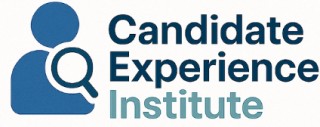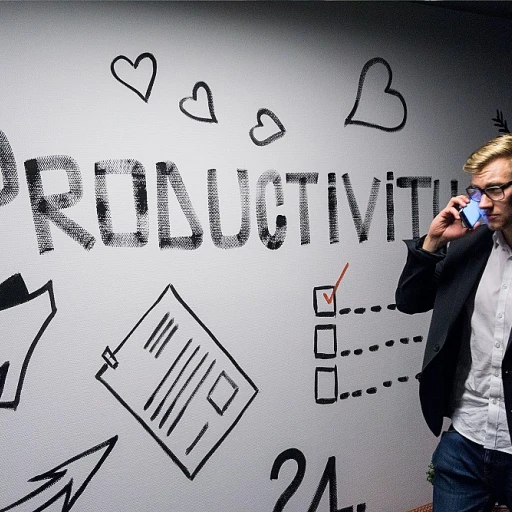
Understanding Automated Hiring Tools
Decoding Automated Hiring Tools
Automated hiring tools have become a cornerstone in the modern recruitment landscape, reshaping how employers approach the hiring process. These tools, often powered by artificial intelligence and machine learning, are designed to streamline the recruitment process, making it more efficient and data-driven. They assist in sifting through large volumes of applications, identifying suitable candidates based on predefined criteria.
The use of Automated Employment Decision Tools (AEDTs) is becoming more prevalent as companies seek to improve their hiring efficiency. These tools can analyze resumes, conduct initial screenings, and even schedule interviews, all while maintaining a high level of compliance with local laws and regulations. For instance, in New York City, the use of AEDTs must comply with specific legal requirements, including bias audits to ensure fairness in employment decisions.
However, while these tools offer numerous benefits, they also bring challenges. The potential for bias in automated decision-making is a significant concern, as is the need for transparency in how these tools operate. Employers must ensure that their use of AEDTs is fair and equitable, conducting regular audits to identify and mitigate any biases that may arise.
For those interested in understanding the trends and implications of using such tools, especially in hiring remote workers from regions like Latin America, this resource offers valuable insights.
Impact on Candidate Experience
Transforming the Candidate Journey
The integration of automated hiring tools in the recruitment process is reshaping the candidate journey in significant ways. These tools, often powered by artificial intelligence and machine learning, streamline the hiring process, making it more efficient for employers and candidates alike. However, the impact on candidate experience can be both positive and challenging.
Efficiency in Employment Decisions
Automated employment decision tools (AEDTs) are designed to enhance efficiency by quickly processing large volumes of applications. For candidates, this means shorter waiting times and quicker feedback, which can be a major relief in the often drawn-out hiring process. Employers benefit from these tools by making more informed employment decisions, reducing the time and resources spent on initial screenings.
Challenges of Automated Systems
Despite the efficiencies, the use of AEDTs introduces challenges. Candidates may feel disconnected from the hiring process due to the lack of human interaction. The impersonal nature of automated systems can lead to frustration, especially if the decision-making process lacks transparency. Moreover, candidates might be concerned about the fairness of these tools, especially in light of potential biases in algorithms.
Ensuring Compliance and Fairness
Employers must navigate the legal landscape to ensure compliance with local laws, such as those in New York City, which require bias audits for automated decision tools. Conducting regular bias audits and working with independent auditors can help mitigate concerns about fairness and transparency. Employers should be proactive in communicating how these tools are used and the measures taken to ensure equitable employment decisions.
For a deeper understanding of how AI can enhance candidate experience, explore this enhancing the candidate experience with AI resource.
Balancing Efficiency and Fairness
Efficiency vs. Equity in Automated Hiring
Employers have increasingly adopted automated hiring tools (AEDTs) to streamline the hiring process and make employment decisions. While these tools provide efficiency by significantly reducing the time to hire, it is crucial to balance this with fairness to candidates. Automated decision tools aim to provide unbiased decisions, but without proper safeguards, they can inadvertently introduce or perpetuate bias. The implementation of AEDTs in the hiring process involves complex algorithms that utilize data and machine learning to support decision-making efforts. Despite their intended neutrality, these algorithms may reflect the biases present in the data they are trained on. As such, a thorough bias audit is essential to ensure that artificial intelligence-driven hiring decisions meet legal compliance and do not infringe on employment laws. To maintain the integrity of the hiring process, employers need to include both automated and human oversight in their hiring strategies. By conducting regular audits with independent auditors, organizations can assess whether these automated tools adhere to local laws, such as those recently enacted in New York City pertaining to AEDTs. Additionally, transparency is key. Employers should provide clear notice to candidates about the use of automated decision-making tools within the hiring process. Proper communication ensures that applicants understand how their data is being used and what part it plays in the final employment decision. For more insights on how remote work is shaping the training practices surrounding AEDTs, you can read more here. Ultimately, while automated tools present opportunities to enhance candidate experience through efficient processes, organizations must remain vigilant against the risk of bias and inequity to preserve fairness and trust in employment agencies and decisions.Improving Candidate Communication
Enhancing Dialogue with Candidates
In the realm of automated hiring, improving communication with candidates is crucial. The integration of automated employment decision tools (AEDTs) can streamline the hiring process, but it also presents challenges in maintaining a personal touch. Employers must ensure that candidates feel valued and informed throughout their journey.
One effective strategy is to utilize automated tools to provide timely updates. These tools can send notifications regarding application status, interview schedules, and employment decisions. By keeping candidates in the loop, employers can enhance transparency and trust.
However, it's important to balance automation with human interaction. While AEDTs offer efficiency, candidates still appreciate personalized communication. Employers can achieve this by integrating automated systems with human oversight, ensuring that candidates have a point of contact for queries or concerns.
Legal and Compliance Considerations
Employers must also consider legal aspects when using automated tools for communication. Compliance with local laws, such as those in New York City, is essential. The NYC AEDT regulations require transparency and notice to candidates about the use of automated decision-making tools in the hiring process.
Regular audits of these systems can help identify potential biases and ensure that communication remains fair and unbiased. Engaging an independent auditor for bias audits can provide an objective view, ensuring that the tools comply with legal standards and do not inadvertently disadvantage any group.
By addressing these considerations, employers can enhance candidate experience while maintaining compliance and fairness. The goal is to create a hiring process that is both efficient and respectful of candidates' needs and rights.
Addressing Bias in Automation
Mitigating Unconscious Prejudices in Automated Hiring
One of the most significant concerns in using Automated Employment Decision Tools (AEDTs) is the potential for bias to infiltrate the hiring process. Employers and employment agencies implementing these tools must remain vigilant in ensuring fairness and objectivity. The reliance on artificial intelligence and machine learning, while efficient, can inadvertently incorporate existing biases, leading to skewed employment decisions.
Bias audits play a crucial role in this context. Independent auditors can provide an objective view of an organization's AEDTs, identifying and mitigating any inherent biases. The audit process includes a thorough analysis of the data used in these tools, ensuring compliance with local laws and regulations, including those in cities like New York City. New York's final rule on hiring requires transparency and that AEDT processes are subject to an independent audit.
Moreover, employers need to pay attention to the fairness of their decision-making tools. This not only fulfils a legal obligation but also promotes trust among candidates. By demonstrating a commitment to unbiased employment decisions, organizations can enhance their reputation and appeal to a wider range of potential employees.
Employers must provide candidates with notice of the use of AEDTs, offering transparency and a fair opportunity for candidates to engage with the process. In jurisdictions like NYC, this transparency is not just recommended but legally required, and non-compliance can result in significant repercussions. By proactively addressing these requirements, employers can avoid potential legal and reputational risks.
Ultimately, the emphasis should be on creating an equitable hiring process free of undue biases, ensuring decisions are based on merit rather than unintended prejudice. Employers need to leverage audits, data transparency, and legal compliance actively to achieve a truly fair and unbiased candidate experience.
Future Trends in Automated Hiring
Emerging Trends in Automated Hiring
The landscape of automated hiring tools is continuously evolving, driven by advancements in artificial intelligence and machine learning. These technologies promise to revolutionize the hiring process, making it more efficient and candidate-friendly. As employers seek to enhance the candidate experience, several trends are shaping the future of automated hiring.
AI-Driven Decision Making
Artificial intelligence is increasingly being integrated into automated employment decision tools (AEDTs), enabling more sophisticated decision-making processes. AI can analyze vast amounts of data to identify the best candidates, helping employers make informed employment decisions. However, the use of AI also raises concerns about bias, necessitating regular bias audits to ensure fairness and compliance with local laws.
Focus on Compliance and Fairness
With the rise of automated hiring tools, compliance with legal standards is paramount. In cities like New York, local laws such as the NYC AEDT regulations require employers to conduct bias audits and ensure that their hiring tools do not discriminate against candidates. This focus on legal compliance is crucial for maintaining trust and transparency in the hiring process.
Enhanced Candidate Communication
Automated tools are not just about efficiency; they also play a vital role in improving candidate communication. By automating routine interactions, employers can ensure timely updates and feedback, enhancing the overall candidate experience. This approach aligns with the ongoing efforts to balance efficiency and fairness in the hiring process.
Independent Auditing for Transparency
To address concerns about bias and fairness, many employers are turning to independent auditors to review their automated decision tools. These audits provide an objective view of the hiring process, ensuring that AEDTs are used responsibly and ethically. This trend towards transparency is essential for building trust with candidates and maintaining a positive employment brand.












